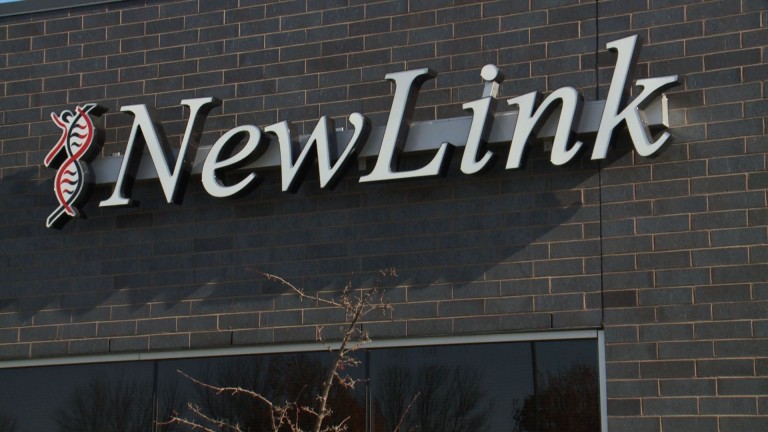
At the beginning of the month, we published this article, discussing the upcoming topline from NewLink Genetics Corp (NASDAQ:NLNK) in its pancreatic cancer trial, IMPRESS. The trial was a phase III topline investigating the efficacy of the company’s lead oncology candidate, algenpantucel-L, when administered in combination with the current standard of care in the space.
At market close on May 9, NewLink reported the topline in question, and the company tanked on the announcement. Having opened the week at a little over $16.5, NewLink now trades at $11.25 – a 32% decline – and has had its shares halted while sentiment eases off. The question now, is what does this mean for the company and its shareholders going forward? NewLink was heavily invested in this candidate, but does that mean it can’t recover (and in turn, that holders should sell out of their exposure) or is the remaining pipeline strong enough to initiate a correction as it matures through the development pipeline?
Here’s an attempt to answer that question.
For a more in depth discussion of the drug, take a look at our introduction to the company on May 2. S a brief introduction, however, the drug is an immuno-oncology candidate that seeks to train a patient’s own immune system to target cancerous cells in pancreatic cancer patients. A cancer vaccine, if you will. It was under investigation as part of a double blind, 700 plus patient strong trial, as a combination with Gemcitabine. One arm on Gemcitabine plus algenpantucel-L, the other just on the former.
So what happened?
The phase II data that supported the advancing of the drug into phase III was actually pretty good, but in the latest trial, the drug needed to demonstrate a statistically significant improvement over Gemcitabine’s survival rates, and it was far from doing so.
In fact, the data showed that the arm that took both drugs as a combination therapy had a lower rate of median survival than the arm just on the SOC, coming in at 27.3 months for the former and 30.4 for the latter. Three and four-year survival just edged in favor of the study arm (the one in which both drugs were administered) coming in at 41.4% and 42.1% in the three year, and 32.6% and 32.7% in the four year, in study + SOC and just SOC respectively.
As such, the slight advantage in the longer term studies was far from statistically significant, and essentially meaningless given the size nature of the trial. This is why the company tanked. Positive data could have opened up a huge potential market. Negative data scrubs any chances of near term access, and markets are selling off in response.
So how does this affect things going forward for shareholders, and the company itself? There is an ongoing phase III, called PILLAR, which is testing the same compound in combination with chemotherapy, in patients with non-resectable pancreatic cancer. With the latest data as is, however, chances are we will hear of a discontinuation on this one, or at least a hold, as the company regroups.
In its favor, on the other hand, are a host of currently enrolling phase II – two in its immunotherapy pipeline and four in IDO pathway inhibition – and a fully enrolled phase II in the latter mentioned IDO. The trials span a scope of oncology indications, and it will only take a hit on one, and the subsequent successful advance into phase III, to reverse sentiment – to some degree, at least.
So what’s the takeaway? No investor should ever really be overexposed to these sorts of data releases, as as this NewLink report has proved, it is pretty much impossible to tell which way they will go in most instances. As such, and for an investor in line with this assumption that holds a can-afford-to-lose speculative position to NewLink, it may well be worth holding out for a recovery. For the more aggressive, adding to their position and what could well prove to be a discounted price is also an option. If it’s not speculative capital, however, holding on at this stage is reliant on the success of a host of unproven phase IIs, and as such, is inherently very risky. One to keep an eye on going forward, but not in an all or nothing fashion.





